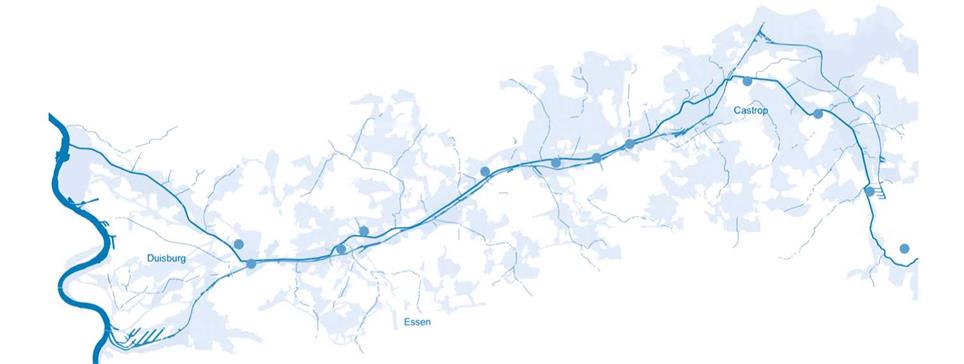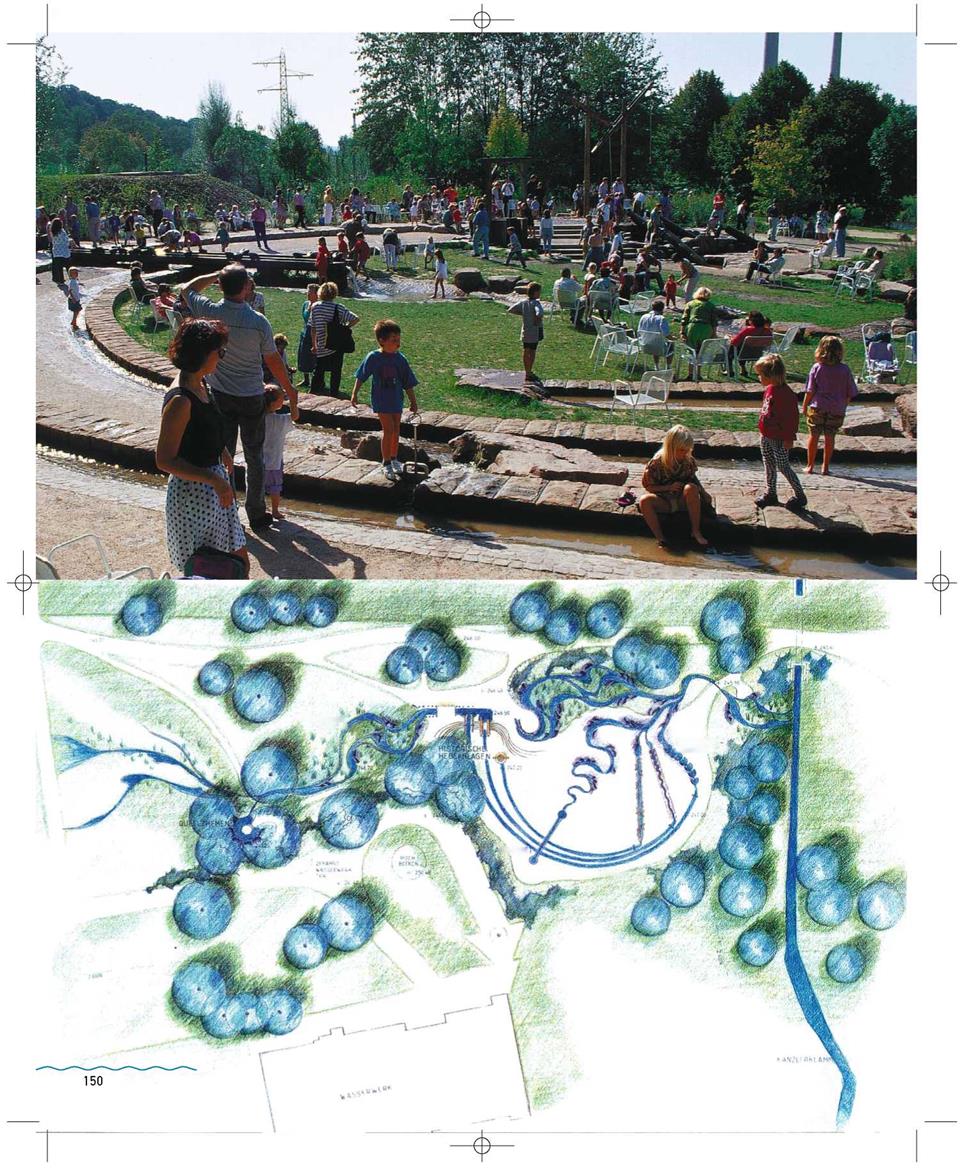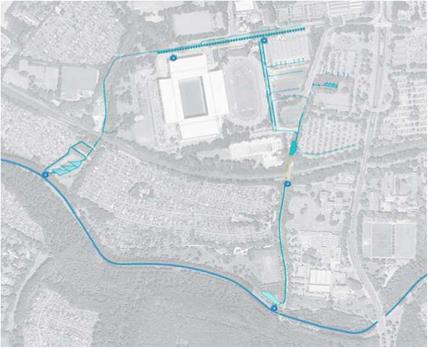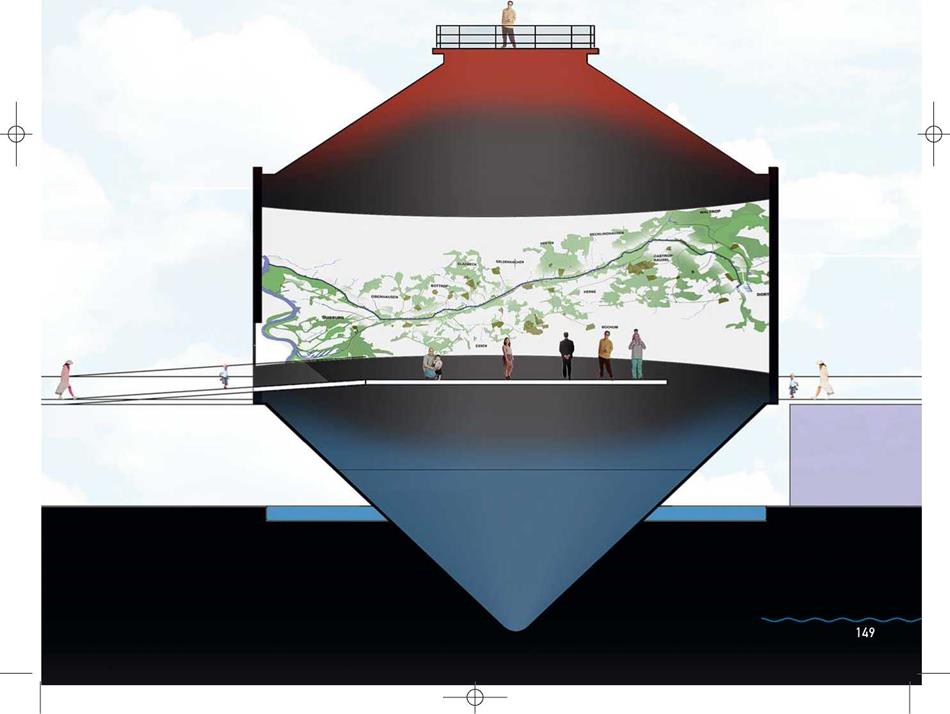|
Industrial regions such as the Ruhr Valley, one of Europe’s biggest industrial conglomerations with a population just under 4 million, have decidedly improved the level of affluence and comfort of our Western civilization. In many incidences, this industrial improvement has been at the cost of the environment and natural resources, and many healthy rivers have been sacrificed along the way. 100 years ago, the river Emscher wound its way through an intact river meadow and wetland habitat. As a consequence of coal mining, the land sunk and the river Emscher came to serve as sewerage and general rubbish canal. The result was regular and putrid flooding. In those days, the solution was to build dykes and fortified river walls. This only intensified the impression of an open sewer canal, a ‘cloaca maxima’, on whose shores one did not willingly loiter. Although right in the middle of the urban conglomeration, the once lovely river meadows became a place to avoid. Structural changes in industry and impulses drawn from the International Housing Exhibition IBA Emscher Park 1990-1999 have given orientation to new cultural and industrial movements where the river Emscher is the central focus. Today, the Emschergenossenschaft, Germany’s largest Sewer Management Association, is proceeding together with cities, industries and riverside occupiers on a regeneration project of the Emscher. The total investment volume is over 4.2 billion Euro, and the project includes vastly more than just river habitat restoration. It is a once-in – 100-year-chance for the region. First steps include rebuilding superannuated sewer canals and many decentralized sewer treatment plants to ensure that all waste water is effectively and properly cleaned before it reaches the river Emscher. Most importantly, rainwater will be, as far as possible, |
|
The Emscher today – simply an open sewage channel |
|
According to the new concept, rainwater from the stadium and parking lots is collected, cleaned and slowly released back into the restored Emscher. |
|
Nightlife with illuminated water – traces in front of the Westfalen Stadium. |
|
The island between the Rhein – Herne Canal and Emscher has development potential for an ‘Emscher-Info-Park’ and also being integrated into the surrounding urban fabric. Water themes can also be humorous – for instance football! Reconstruction of the complete sewage and rainwater network of one of Europe’s biggest urban conglomerations along 60 km of Emscher riverfront. |
|
і |




![]()

|
|
|
|
|
|
|
|
|
|
|
|
|
|
|
|
|
|
|
|
|






|
|
|
|
|
|
|
|
|
|
|

|







